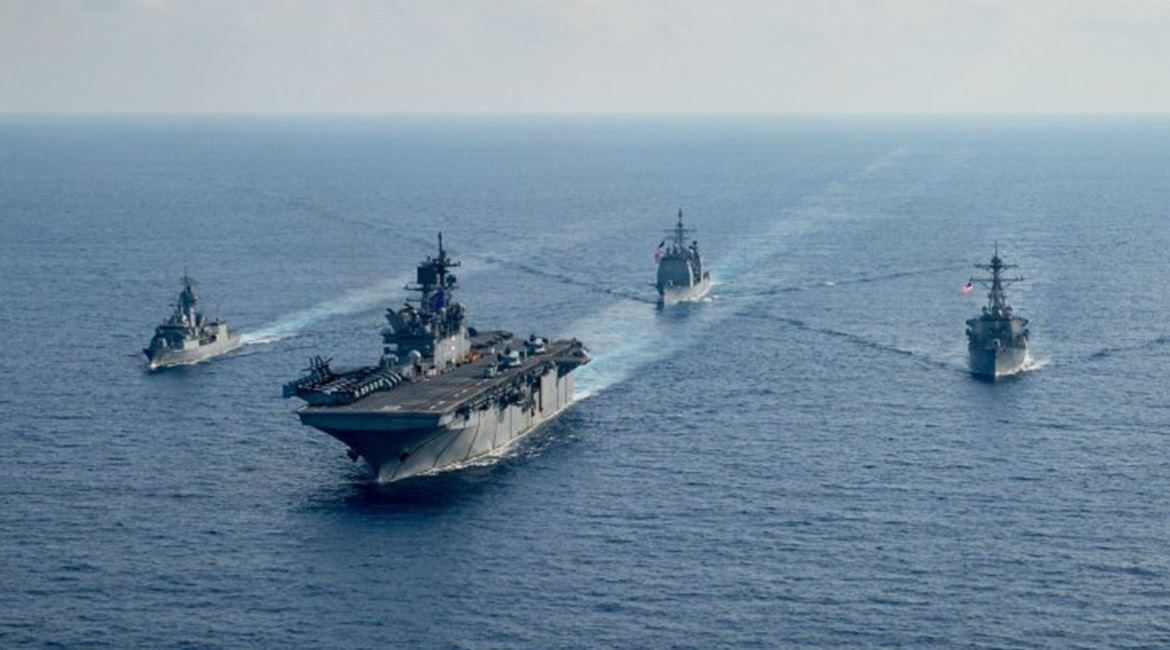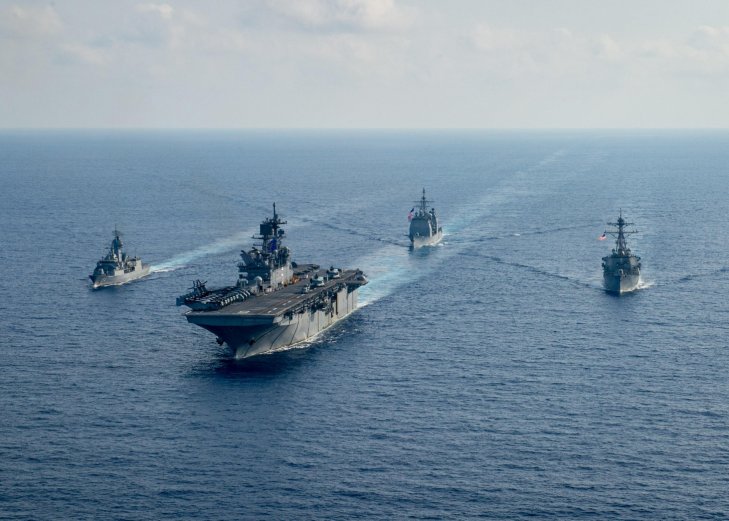
China’s Ministry of National Defense (MND) said on 30 April that it opposes what it referred to as “countries from outside the region” bolstering their naval presence in the South China Sea (SCS), as the US Navy (USN) continues to carry out freedom-of-navigation operations (FONOPs) and joint exercises with allied navies in the disputed waters.
Referring to joint manoeuvres conducted earlier in April by the USN and the Royal Australian Navy (RAN), MND spokesperson Senior Colonel Wu Qian said that such actions are “detrimental to peace and stability in the region”, and described the United States as “a troublemaker” and “the biggest facilitator of the militarisation of the South China Sea”.
He added that the People’s Liberation Army (PLA) will remain “highly vigilant” and keep monitoring the activities of such navies in the region.
Beijing’s remarks came after USN and RAN warships came together for operations in the South China Sea during mid-April. The USN’s Ticonderoga-class guided missile-cruiser USS Bunker Hill , amphibious assault ship USS America , and Arleigh-Burke class guided missile destroyer USS Barry took part in the exercise alongside RAN Anzac-class frigate HMAS Parramatta .
The drills began on 18 April with force integration training and manoeuvring exercises between Parramatta and Bunker Hill , according to a statement from the US Pacific Fleet issued three days later.
As Jane’s reported, the warships then participated in integrated live-fire exercises, co-ordinated helicopter operations – including cross-deck landing exercises – small boat force protection drills, command-and-control integration, and manoeuvring interoperability.

Looking to read the full article?
Gain unlimited access to Janes news and more...




